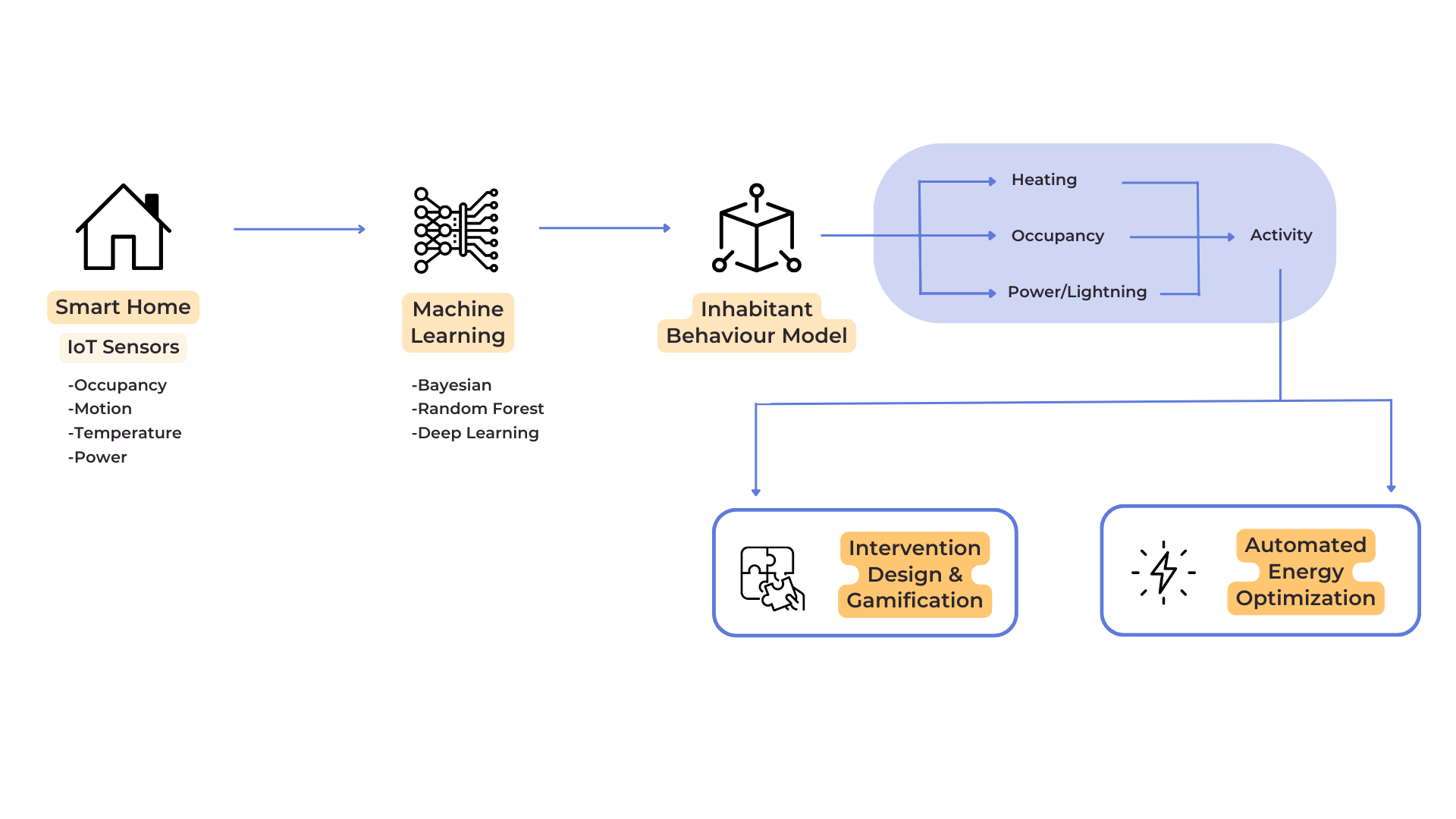💧Drop by Drop💧
Drop by Drop: Facilitating the Energy-saving Behavior of Smart-Home Inhabitants Using AI and Gamification
Problem Definition
Climate change and the energy crisis represent two of the most critical challenges of our time, and they are deeply interconnected. Addressing one of these issues is complex and requires multifaceted approaches. The common actor of this dynamic system is the human. Both climate change and the energy crisis have multiple economic, social, and environmental causes and consequences. While no individual can be responsible for these issues, everyone is impacted by the consequences.
Governments and organizations have been working to implement policies. UN recognizes the severity of this problem by allocating three sustainable development goals on Climate Action, Responsible Consumption and Production, and Affordable and Clean Energy. To combat climate change, international treaties are signed, policymakers issue strict regulations, and technology innovators develop new methods, yet, we are failing to meet the goals. That highlights the need for innovative solutions for actionable steps.
36% of CO2 emissions in the EU are caused by commercial and residential buildings. In 2020, residential households were responsible for 17% of the CO2 emissions. This is roughly two times the contribution of the transportation sector.
These figures indicate great room for improvement toward achieving sustainable development goals by focusing on human behavior change. Neither technology nor policies alone pose a stable solution.

Research Questions
These are the questions that we intend to find answers with this research:
- Q1 How can we build and implement IoT and AI models to capture the household inhabitant behavior?
- Q2 How can we define (and detect) energy-saving behavior?
- Q3 Which psychological determinants does an intervention need to target to produce behavior change?
- Q4 How can we design a gamified pedagogical model that facilitates a long-lasting behavior change toward sustainable living?
- Q5 What are the psychological parameters of an effective intervention design that supports the proposed pedagogical model?
Solution Proposition
To facilitate behavior change, first, we need to understand the behavior patterns and psychological determinants of the inhabitants of a house. Smart homes equipped with a variety of IoT sensors (such as motion, temperature, and power usage) support this goal by providing vital information about the inhabitants’ behavioral patterns and how a home is being used. We will leverage the data from IoT sensor systems to train inhabitant behavior models by using machine learning algorithms of different complexity (e.g., Bayesian network, random forest, LSTM deep learning). These behavior models will include the following:
- Occupancy (room, time): Based on historical usage data, this model predicts the occupancy of a room at a given time.
- Heating (Occupancy (room, time), temperature): Based on the occupancy model and temperature measurement, this model predicts optimal heating settings.
- Power (Occupancy (room, time), appliance): Based on the occupancy model and electrical appliances. This model predicts the optimal appliance power settings.
- Activity (Occupancy (room, time), Sensor(x)): Based on the occupancy model and all available sensors, this model classifies the inhabitant activity at a given time.
These models will be used for predicting the inhabitants behavior patterns, which will create value in two ways: energy-saving automation and supporting our proposed pedagogical model to foster learning and behavior change. We will combine this with qualitative inquiry with the inhabitants to map the corresponding behavioral determinants.
Our pedagogical model consists of interventions (e.g., displaying the energy use of the most recent activity) (Iweka et al., 2019) and gamification to sustain the desired behavior change for longer durations. The gamification design comprises two categories of players that act cooperatively; inhabitants and AI. The objective of the AI-player is to identify opportunities for practicing energy-saving behavior. Empowered by the inhabitants’ behavior models, the AI player will be able to detect energy-saving opportunities and share them with the inhabitants. The objective of the inhabitants is to seize these opportunities either by taking action themselves or delegating the energy-saving task to the AI. Players gain/lose points proportional to the seized/lost opportunities. The gamification component will be rigorously designed based on Gamification Design Principles (GaDeP) (Klemke et al., 2020; Antonaci et al., 2019) during the Ph.D. process.
Behavior change causally depends on learning, and it is triggered by interventions. To design the intervention mechanism of our pedagogical model, we rely on the Causal-Structural Chain (CSC; Crutzen & Peters, 2019); a conceptual tool used in Behavior Change Science. CSC helps us express our causal and structural assumptions about which behavior change principles will the intervention use to target which psychological determinants of which behaviors.
Research Plan and Methods
Phase 1 (2022-2023)
- Conducting a Scoping Review on gamification, behavior change, and machine learning in the energy-saving context
- Requirements identification for system design
Phase 2 (2024-2025)
- Conducting a Systematic Literature Review
- Interview process with smart-home inhabitants
- Planning the Conceptual Design with a Design-Based Research approach
- Living Lab setup and machine learning modeling
Phase 3 (2025-2026)
- Development of a Gamified System and Intervention Mapping with the collected data
- Experimentation, integration, evaluation, and dissertation finalization.
Evaluation
- Monitoring the prediction success rate of AI
- Comparing behavior changes through collected data via sensors
- Interviewing inhabitants to point new awareness levels and to understand their journey
The links and differences between Dbd and other EnergAIse projects
Drop by Drop and other EnergAIse projects have corresponding objectives involving artificial intelligence and energy savings. Apart from these shared themes, there are a few notions where Drop by Drop and other EnergAIse projects differ.
Drop by Drop is a doctorate research project that employs artificial intelligence while focusing on gamification and intervention mapping techniques. We aim to center smart-home inhabitants’ experiences in this gamified system and guide us to understand, design, and observe behavior and behavior changes. Fortunately, for the conjoining of theory and practice, the GoKIT and MAI HOME projects’ living labs enable us to actualize the research findings as a system.